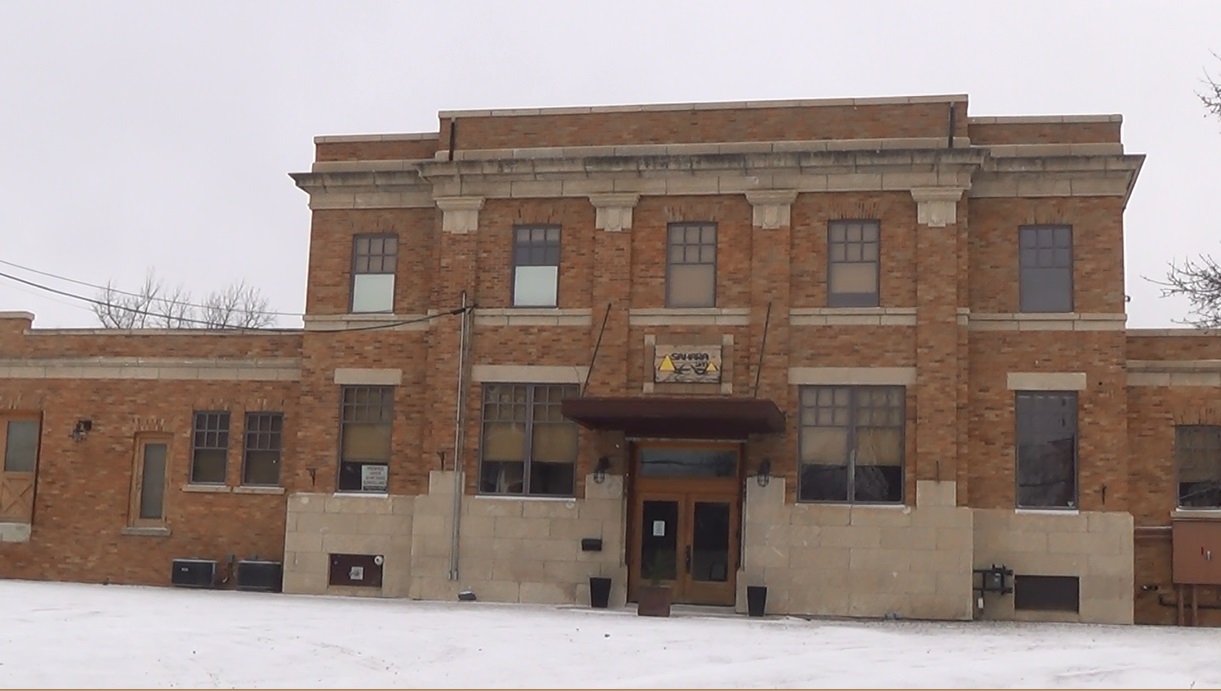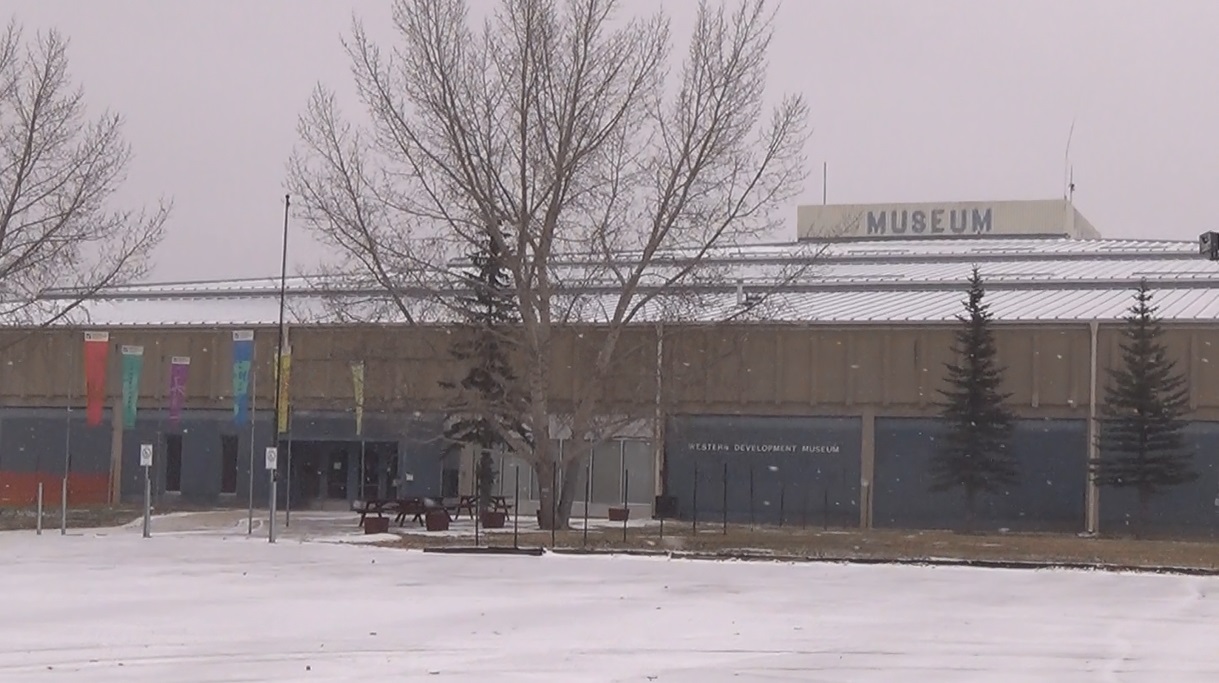This article was originally published on my personal website in 2014.
Things to Do in Moose Jaw
I first discovered Moose Jaw, Saskatchewan, when I was in my early teens. Like many Albertans and British Columbians, I had long since known of the existence of the small prairie city- located about 50 minutes west of Regina on the #1 Trans-Canada Highway- but had not actually spent any time there. Groundlessly, I regarded it as little more than an unremarkable, dusty prairie town with a weird name, akin to Medicine Hat, Alberta– a sentiment largely born from the consensus gentium widely-held in western Canada that the province of Saskatchewan is just one giant wheat field. When I visited Moose Jaw for the first time, my experience was, in perfect accordance with the city’s official slogan, “Surprisingly Unexpected.”

Moose Jaw, I discovered, is a diamond in the rough; a veritable oasis in the desert that is Saskatchewan. And if the opinions of the few Moose Javians I’ve debriefed are in any way indicative of the collective sentiment of the townspeople their sources represent, many Moose Jaw residents see their city in a similar light. Immediately, it became- along with Squamish, British Columbia- one of my favorite places in Canada. I don’t know whether it was due to Main Street’s refreshing turn-of-the-century architecture, the aptly-styled “Friendly City’s” pleasant social atmosphere, the restorative effects of the Temple Garden’s mineral waters, or some combination thereof, but after that first visit to Moose Jaw, I left with a distinctly heightened sense of well-being. Needless to say, I have returned many times since.

The following are some of the awesome things to do if you ever decide to spend some time in this remarkable city, one of Saskatchewan’s hidden treasures.
Main Street
One of the many great things about Moose Jaw is that a good number of its attractions are located within a short walking distance from one another, specifically on, or a short distance off, Main Street (the section of the #2 Saskatchewan Provincial Highway that runs through the city). These attractions, some of which are described below, include the Temple Gardens Mineral Spa, the Casino Moose Jaw, the Tunnels of Moose Jaw, the Capitol Theatre, Crescent Park, the Moose Jaw Public Library, the local YMCA, and Mosaic Place.

Main Street isn’t merely an artery connecting Moose Jaw’s foremost tourist attractions; walking down it can be a treat in and of itself. Located in the heart of downtown Moose Jaw, this stretch of the #2 Highway is lined with beautiful brick and sandstone buildings built in the early 20th Century, as well as a number of more modern buildings decorated with huge spray-painted historically-themed murals. These buildings house a number of businesses in addition to the aforementioned places of interest, including coffee shops, good restaurants (and an excellent Thai restaurant), massage parlours, acupuncture clinics, clothing boutiques, a fudge factory, a shop that sells unbelievably good olive oil, and a Dutch bakery that sells goods as cheap as they are delicious. At night, distinctive five-armed street lamps and neon advertising lights illuminate the road.
The Temple Gardens Mineral Spa
A visit to Moose Jaw is not complete without a soak in the Temple Gardens Mineral Spa. Touted as “Canada’s largest therapeutic geothermal mineral water pool”, this natural spa, fed by an underground hot spring, is located on the top floor of the Temple Gardens Mineral Spa Resort Hotel in a large connected indoor/outdoor pool.

According to the Temple Gardens Hotel, the underground hot spring, which stems from an ancient subterranean seabed, was discovered in 1910 by a drilling crew hoping to strike natural gas. Despite efforts to utilize the water, the well was abandoned in 1971. In 1980, the City of Moose Jaw drilled a new well into the underground reservoir, the water from which now flows naturally through an insulated pipeline to a treatment centre, where excess iron is removed and chorine added, before entering the pool in the Temple Gardens Hotel.

According to the hotel, the mineral water contains approximately 10 000 parts per million dissolved solids, including Epsom salt (masnesium sulfate) and Glauber’s salt (sodium sulfate decahydrate), as well as traces of sodium, magnesium, sulphate, fluoride, potassium, boron, silicon, calcium, bicarbonate, bromide, strontium, and added chlorine. With a chemical composition similar to the famous geothermal springs of Bath, England, the water of the Temple Gardens Spa is said to relax muscles, ease joint pain, hydrate skin and detoxify the lymphatic system. I can personally attest to the veracity of that first allegation.

The Tunnels of Moose Jaw
Background

Several meters beneath Main Street is a network of interconnected subterranean tunnels. The City of Moose Jaw dug these tunnels in 1908 in hopes to create a system in which city-contracted firemen and engineers could comfortably and efficiently stoke and maintain, respectively, the furnaces of all the downtown buildings during the cold winter months. The project was never completed, however, and over time the tunnels were forgotten by all but a handful of Chinese laundromat and restaurant owners. These legal Chinese immigrants, who operated their businesses on or in the vicinity of Main Street and thus had access to the tunnels, used the underground labyrinth to hide Chinese railway coolies throughout the Anti-Sinitic epidemic of the early 20th Century.

Years later, during the American Prohibition of the “Roaring Twenties”, American rum-runners used the tunnels to store illegal whisky before shipping it to the United States via the Soo Line Railroad- an American subsidiary of the Canadian Pacific Railway (CPR) which runs from Chicago, Illinois, through Michigan and North Dakota, to Moose Jaw’s CPR Station, where it joins with the Canadian transcontinental railway. Seemingly overnight, Moose Jaw became a popular hangout for American gangsters and bootleggers, and the underground tunnels became the venue at which they conducted much of their illicit affairs. Subterranean rooms that once served as kitchens and opium dens were converted into business offices and smoky lounges rife with gambling and prostitution. With the huge influx of Midwestern American gangsters and the crime that accompanied it, Moose Jaw earned the nickname “Little Chicago”. According to local lore, notorious American mobster Al Capone was one of the gangsters who frequented, or at least visited, Moose Jaw in the 1920’s.

The Tours
Today, tourists can enter the tunnels of Moose Jaw by taking one of two tours: the Passage to Fortune; and The Chicago Connection. Both tours are conducted by excellent actors dressed in period costumes portraying cruel railway foremen and slick American gangsters, respectively. In the Passage to Fortune, tourists step into the work boots of early 20th Century Chinese immigrant workers and get a small taste of the adversity, prejudice and deplorable living conditions endured by Chinese coolies in the years of the “Yellow Peril”. In The Chicago Connection, tourists are transported back to 1929 and assume the roles of independent bootleggers seeking to purchase whisky from Tommy Gun-wielding mobsters in the underground tunnels.

The Capitol Theatre
If you’re a lover of the fine arts, consider stopping by the Capitol Theatre, where concerts, plays and musical theatre productions are staged regularly. Located on Main Street, the Capitol is the centrepiece of the Moose Jaw Cultural Centre and one of Moose Jaw’s oldest and most impressive buildings. In spite of undergoing numerous renovations over the years, the Capitol retains most of the Edwardian features it was endowed with upon its construction in 1916, including cherub-adorned quasi-classical low relief panels, mirrored pillars, a marble staircase, and decorative brickwork.

Crescent Park
One of my favorite places in Moose Jaw is Crescent Park, a beautiful, well-maintained city park located a short distance from Main Street. The park, a manicured 28 acre lawn punctuated by cottonwoods and mixed conifers and bisected by Spring Creek, is home to a number of parkland denizens, including owls, red foxes, rabbits, thousands of ducks, and squirrels of truly alarming proportions (and those are just the animals I’ve personally run into). Crescent Park boasts a well-kept trail system, a time capsule, a cenotaph honouring Moose Jaw’s war veterans and fallen soldiers, a number of water fountains, a playground, a water park, an amphitheatre, an artificial waterfall, and several rose gardens.




The Moose Jaw Public Library
Located in Crescent Park, the Moose Jaw Public Library is, along with the Capitol Theatre and City Hall, is one of Moose Jaw’s most beautiful historical buildings, both inside and out. Adjoined with the Moose Jaw Museum and Art Gallery, the library regularly hosts a huge variety of adult, youth, and children’s programs, such as lectures on Chinese and Western acupuncture, classes on Orthodox icon painting, creative writing workshops, and informational talks on opium production in the Golden Crescent.

Massages
Perhaps part of the reason I love Moose Jaw so much is that it was there that I experienced my first professional massage. Growing up, I had somehow developed the belief that massages were for girls- a prejudice that was somewhat dampened in my early teens when I discovered that the very manly protagonist of the book series I was reading indulged in massages with casual frequency. When I visited Moose Jaw for the first time, my curiosity bested my pride, and I signed up for a 50 minute Balinese. I thought I’d died and went to heaven. Girly or not, I’ve since been a firm proponent of massages.

Although I haven’t read any statistics on the subject, I would wager that Moose Jaw has more massage parlours and acupuncture clinics per capita than any other city in Canada. Downtown seems to be filled with them. After some detective work, I found 31 registered massage parlours in the Moose Jaw yellow pages. To put this in perspective, Moose Jaw only has two Tim Hortons.
The Moose Jaw Warriors

If you’re a hockey fan and happen to be visiting Moose Jaw on a weekend during hockey season, consider heading over to Mosaic Place, Moose Jaw’s highly-acclaimed newly-constructed arena located a short distance from Main Street, to watch a Moose Jaw Warriors game. The Moose Jaw Warriors are a formidable junior ice hockey team in the Western Hockey League that, in spite of their prowess, have never won a WHL Championship. After playing for twenty seven seasons in the Moose Jaw Civic Centre- popularly known as “The Crushed Can” for its exorbitantly concave roof, an architectural feature that was particularly distressing for fans seated in the nosebleed section- in 2011, the Warriors made Mosaic Place their home.

Mac the Moose
Despite what reason might incline one to infer, Moose Jaw is not actually named after a moose’s jawbone. In fact, Moose Jaw was named by John Palliser in his 1857 survey of Rupert’s Land. Palliser, while passing what is present-day Moose Jaw, likely Anglicized the pronunciation of a Plains Cree word for the area, specifically either moscastani-sipiy, meaning “a warm place by the river”, or moose gaw, meaning “warm breezes”. In spite of this, the moose- one of Canada’s most iconic animals, along with the beaver and the Canada goose- has become a symbol of Moose Jaw.

In honour of Moose Jaw’s unofficial mascot, and in an effort to attract tourists to the city, a giant sculpture of a moose was erected at the edge of the #1 Trans-Canada Highway next to the Moose Jaw tourist information centre. This 32-foot-tall behemoth, christened “Mac the Moose”, is said to be the tallest “moose” in the world.
Saskatchewan Western Development Museum
The Saskatchewan Western Development Museum (WDM) is an agglomerate of four museums located in Moose Jaw, North Battleford, Saskatoon and Yorkton, respectively, with a head Curatorial Centre in Saskatoon. With a collection of nearly 80 000 antiquated Saskatchewan artifacts, the WDM is the largest human history museum in Saskatchewan. Moose Jaw’s WDM, located just off the #1 Trans-Canada and the #2 Saskatchewan Provincial Highway, focuses on the history of transportation in Saskatchewan. Among its many exhibits are: 1) the Snowbirds Gallery, the only gallery in the world to showcase the 431 Squadron Snowbirds, Canada’s famous aerobatic team; 2) the Winning the Prairie Gamble, a Saskatchewan centennial project celebrating 100 years of Saskatchewan, with a special focus on former Saskatchewan Premier Tommy Douglas’s fight for Medicare; 3) the Classy Cars gallery, a collection of vintage automobiles manufactured between 1907 and 1979; 4) the Rail Gallery, a collection of old CPR locomotives; 5) and the Aviation Gallery, a collection of antique aircraft.

Town ‘N Country Mall
The Town ‘N Country Mall, Moose Jaw’s only enclosed shopping mall, is certainly no West Edmonton Mall. However, it does have a Galaxy Cinema where you can watch Hollywood’s newest releases.
Sukanen Ship Pioneer Village and Museum
Located a short drive south of Moose Jaw on the Saskatchewan #2 Provincial Highway (Main Street) is a small artificial ghost town reminiscent of an early 20th Century farming village. The wooden buildings that make up this village- all of them historic structures from the surrounding area that have been transported to the site and restored- revolve around the Sontiainen, the mysterious “Sukanen Ship”.


Old Wives Lake
Located about an hour south of Moose Jaw on the #2 Highway is the small town of Mossbank, Saskatchewan, which, despite its size, is steeped in history. The approximate location of the town site was where the first officers of the North West Mounted Police, on their Great March West from Fort Dufferin to the site on which they would build Fort Macleod, first encountered Indians. During WWII, Mossbank housed a Royal Canadian Air Force academy where Commonwealth soldiers and pilots were trained. Later, in 1957, Mossbank was the site of the so-called “Debate of the Century” in which Saskatchewan Premier Tommy Douglas debated with Liberal politician Wilbert Ross Thatcher on the role of the government in medical care.

For all its historical heritage, Mossbank espouses a seemingly non-historical motto: Gateway to Old Wives Lake. Old Wives Lake, the largest natural lake in southern Saskatchewan and the fourth largest saline lake in North America, is located just north of Mossbank on a short dirt road. Owing its suggestive name to an old Cree legend, the lake is a bird-watchers paradise. It is designated a Migratory Bird Sanctuary, and is “one of the most important inland sites for migratory birds in North America” according to Environment Canada. At different times throughout the year, Old Wives Lake is populated by migratory birds including, but not necessarily limited to: diving, dabbling, mallard, gadwall, pintail, widgeon, canvasback, redhead lesser Scaup, and ruddy ducks; Canada, white-fronted and snow geese; tundra swans; white pelicans; black-crowned night and blue herons; double-crested cormorants; western grebes; California and ring-billed gulls; and the common tern.
Claybank Brick Plant
The Claybank Brick Plant, one of Saskatchewan’s few National Historic Sites, is located about an hour south of Moose Jaw on the Saskatchewan Highway 339. Somewhat akin to Medicine Hat’s Medalta Potteries, the Claybank Brick Plant is a relic of Canada’s early 20th Century ceramic industry.

Leave a Reply